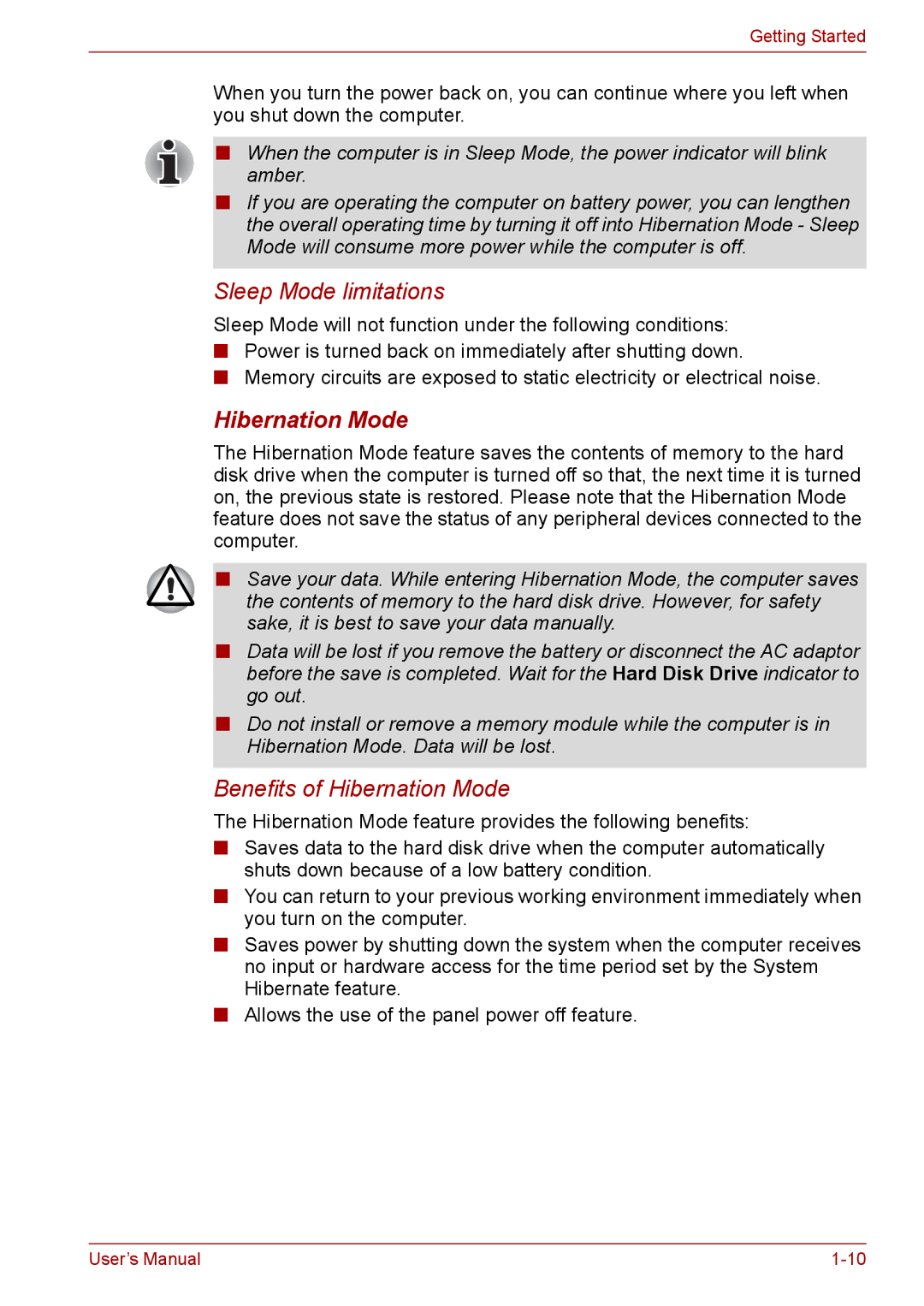
Getting Started
When you turn the power back on, you can continue where you left when you shut down the computer.
■When the computer is in Sleep Mode, the power indicator will blink amber.
■If you are operating the computer on battery power, you can lengthen the overall operating time by turning it off into Hibernation Mode - Sleep Mode will consume more power while the computer is off.
Sleep Mode limitations
Sleep Mode will not function under the following conditions:
■Power is turned back on immediately after shutting down.
■Memory circuits are exposed to static electricity or electrical noise.
Hibernation Mode
The Hibernation Mode feature saves the contents of memory to the hard disk drive when the computer is turned off so that, the next time it is turned on, the previous state is restored. Please note that the Hibernation Mode feature does not save the status of any peripheral devices connected to the computer.
■Save your data. While entering Hibernation Mode, the computer saves the contents of memory to the hard disk drive. However, for safety sake, it is best to save your data manually.
■Data will be lost if you remove the battery or disconnect the AC adaptor before the save is completed. Wait for the Hard Disk Drive indicator to go out.
■Do not install or remove a memory module while the computer is in Hibernation Mode. Data will be lost.
Benefits of Hibernation Mode
The Hibernation Mode feature provides the following benefits:
■Saves data to the hard disk drive when the computer automatically shuts down because of a low battery condition.
■You can return to your previous working environment immediately when you turn on the computer.
■Saves power by shutting down the system when the computer receives no input or hardware access for the time period set by the System Hibernate feature.
■Allows the use of the panel power off feature.
User’s Manual |
